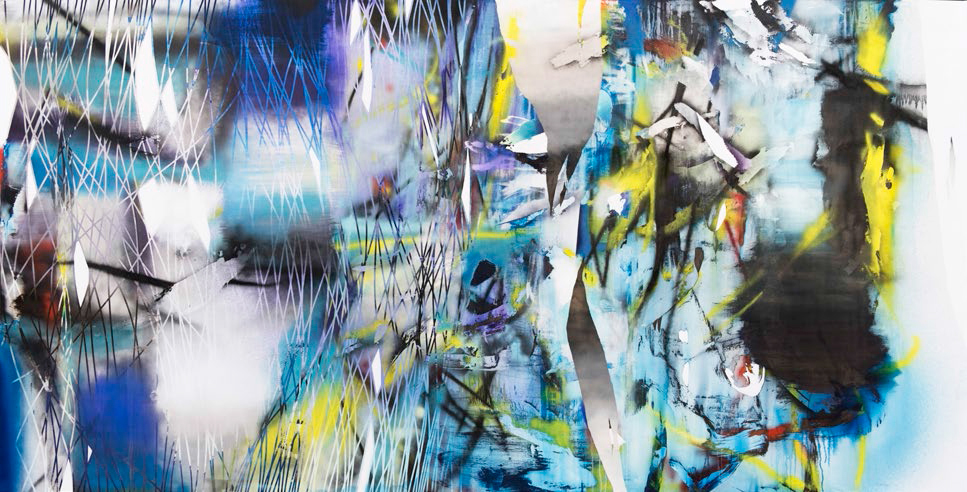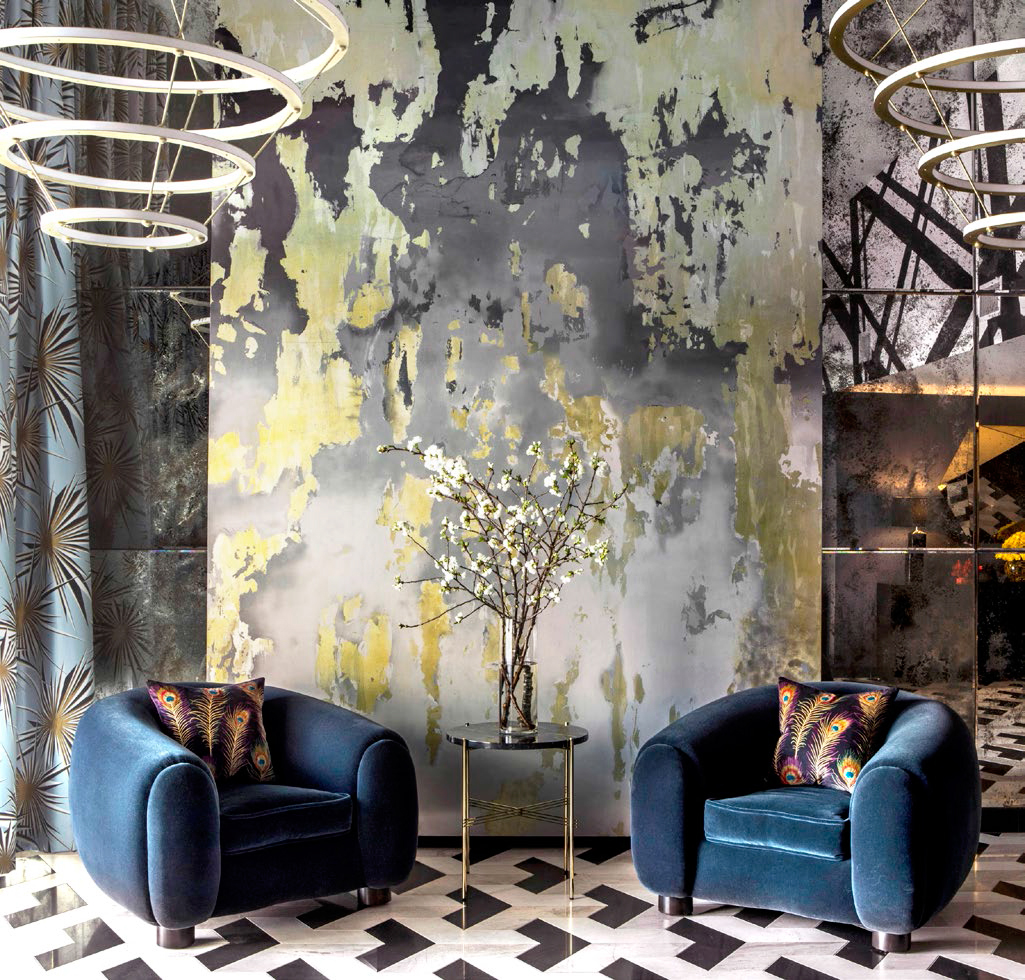Pushing the Limits - Page 2
 |
|
|
 |
|
|
 |
|
|
The first piece that caught his eye "has a white background," Lampley says. "Diagonal lines are gray, and within the gray is a kind of turbulent assortment of colors—black, orange, and red. When I look at it, it talks to me about war. It looks like a bomb has gone off or there has been some other explosive event. It stirs both fear and realism in me."
"In every painting there is both a marriage and a collision of order and chaos," Lampley says.
A Trueman painting often combines ordered, straight-line, or curved grids with areas of seemingly splashed-on color put together in the way a DJ might combine different sounds in a mixtape.
Trueman never worked as a DJ, but he often listens to DJ-based mixes while working. "There's a consistency to the beat. It's sort of regular," he says. "If music changes too rapidly, it really throws me off in my work."
Trueman compares his work to a mixtape in the way he may combine in a single work hard-edge and Op Art-style moiré patterns with the emotional, gestural, dramatic strokes of abstract expressionism.
His Op Art elements create a strong sense of three-dimensionality. Elsewhere, swirling washes of translucent color suggest a kind of otherworldly, smoky, even celestial space—but sometimes with a degree of menace.
"At first I was looking at the work as [my being] more of a DJ," Trueman says, "taking elements from hard-edge painting and combining it with abstract expressionism, sort of a counterpoint idea. I was taking the emotive qualities of abstract expressionism and mixing it with the blue collar, anti-ego [attitude] of hard-edge.
"Everything kind of gets mixed up. It's like in cooking—fusion cooking, like Korean tacos."
"It's like taking a piece of A and a piece of B," he adds, "putting it together and getting something different."
"[Trueman's] color is so important and distinctive," Cella says. "He works in both a kind of silver, gray, black monochrome. But he can switch into a very saturated, almost-illuminated panel of color that comes from light, that comes from electrical light, that comes from the sky. It's deeply saturated, it vibrates. It's the color of cinema, the color of illumination."
Many of Trueman's paintings, with their color gradients morphing from blue to purple, can suggest psychedelic poster art of the 1960s. Other effects could include woven patterns, iridescence, and shiny silver.
These are seriously sensuous paintings. Are they too pretty to be taken seriously?
"Early on," Trueman says, "with young painters, there is often a tendency to make things that are unattractive, all black and white, or brown, as a way to say, 'This is not decorative.' Mine, there is so much activity, there's so much happening, I'm not concerned with something coming off as pretty, or even garish."
Speaking of the range of people who collect his art, he says, "[The work is] aesthetically pleasing, a good chunk of it. So I end up getting a real variety of people. Some people buy because it matches the color of a couch."
A recent Trueman exhibit, at the San Francisco gallery Themes + Projects, had his paintings priced from $30,000 (large originals) to $1,500 (small). Limited-edition prints were $400.




